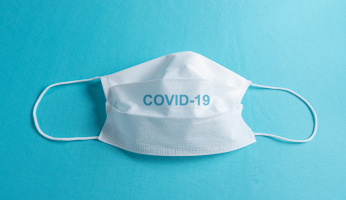5 Things No One Tells You About Running Postpartum
 5 Things No One Tells You About Running Postpartum www.walkjogrun.net
5 Things No One Tells You About Running Postpartum www.walkjogrun.net Running is a great way to clear your mind, give your lungs and the cardiovascular system a great workout, get your blood flowing, and introduce your new baby to the world around them. But, having a baby changes your body in so many ways. And there are so many things that they do not tell you about running postpartum.
During the postpartum period, the body goes through a transition to get back to the pre-pregnancy state. The postpartum period can last from 6 weeks up to 12 weeks because all of the organs in the body may not return to normal within that first 6 weeks timeframe.
Running can help you get back some energy, can help prevent postpartum depression, and bring some relaxation into your life.
1 – Restrengtheing your core
Your abdominal muscles and all of your body have been stretched and other areas have been compacted to accommodate the development of life. The body is an amazing thing! But, we have to help it regain the strength it once had.
These exercises will help you to rebuild those core muscles you need for running.
- Pelvic Tilt – lie on the floor with your knees bent, flatten your back on the floor by squeezing your abs, and then tilt your pelvis up slightly and hold for 15 seconds. And repeat.
- Bridge – lie on the floor with your knees bent, lift your hips off of the floor until they are aligned with your knees, hold this position for 3 deep breaths, return to the starting position and repeat.
- Kegel – contract and relax the pelvic floor, it should feel like you are pulling your pelvic floor up, and hold for 3-5 seconds.
- Belly Breathing – take in a deep breath expanding your belly and relax your pelvic floor, then breathe out bringing your navel in and do a Kegel.
There are some lite exercises you can do like walking, stretching, and core exercises once you feel fine and only if you had an uncomplicated delivery. Otherwise, please consult with your Provider before resuming exercise.
2 – Overdoing it
As a mother who has just given birth, you do not want to overdo it because your body is still transitioning back to its pre-pregnancy state. Your ligaments and joints are still very flexible from delivery and they will be this way for a few months postpartum. This could put you at risk for injury so it is important to not go too deep into your stretches and limit your twisting.
Listen to your body. If you are overdoing it your body will let you know. So, if you notice any heavier vaginal bleeding or a change in the color of your vaginal bleeding, please allow yourself space for more rest because this is a sign that you are overworking yourself.
3 – Returning to running
The minimum amount of time you need to wait to return to running is 6 weeks with uncomplicated delivery. But, if you have had a C-section or a complicated delivery, you will need to wait at least 12 weeks to return to running or until you have been cleared by your Provider.

If you were very active prior to your delivery, you may be able to return to more rigorous exercise sooner than 6 weeks, but you will need to consult your Physician.
The last thing you want to do is push yourself too hard too soon. So, take it slow and listen to your body. Remember your body is going through a transition.
4 – Dealing with Lactation
Before you go out for your first run postpartum, make sure you have gotten fitted for a new sports bra that is supportive, breathable, moisture-wicking, and comfortable.
Make sure you are moisturizing your nipples after each breastfeeding to help prevent nipple chafing. To decrease breast discomfort while running due to engorgement, try breastfeeding your baby prior to going out for a run.
Just like every pregnancy is different, every postpartum and baby is different. So, make sure you are using nursing pads for your jogs just in case you are lactating more this pregnancy.
*Side note* hearing another baby cry can also make you start to lactate.
5 – Eating and hydrating
Your life right now is a whirlwind and you are adjusting to a new baby, going through the postpartum transition, and starting to get back to running. It is imperative that you give your body the nutrients and hydration it needs to fuel you forward.
Fruits and vegetables not only provide you with vitamins and minerals, but they also help with hydration and they are a delicious snack that you do not have to cook.

Fish, meats, beans, and eggs are a great source of protein, iron, and other vitamins and minerals too. Try cooking large meals and freezing them. This will help to free up time that you will need to dedicate to your baby and rest.
Make sure you are consuming enough calories to accommodate the calories you are losing if you are breastfeeding. This increase in calories only needs to be 450-500 calories more per day compared to what you were eating pre-pregnancy.
If you are vegan or vegetarian you will want to make sure you are taking iron, B-12 vitamin, and DHA supplements. It may be helpful to continue taking your prenatal vitamins to be sure you are getting the vitamins and minerals you and your baby need.
The Takeaway
Give yourself a pat on the back; you have just created a human being! Remember you are not in this alone and use your resources, such as family, friends, Providers, and Nutritionist, to help you get back to running.
Take everything one day and a time and with one foot in front of the other. Give yourself some grace and you will be back running in no time.
Sources
- , Overview of the postpartum period: Normal physiology and routine maternal care, Health News
- , Getting in shape after having a baby, Clinic
- , Weight loss after pregnancy: Reclaiming your body, Clinic
- , Keeping fit and healthy with a baby, Gov
- , When breastfeeding, how many calories should moms and babies consume?, Gov















